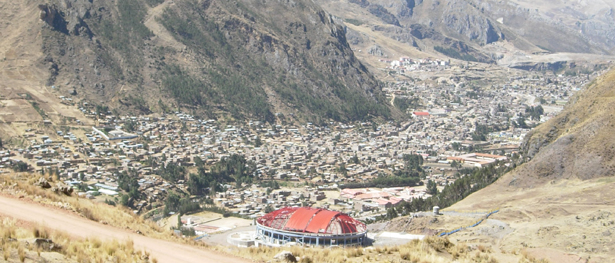Spanish Colonialism’s Environmental Legacy, Part Two: ‘A Black Shadow Of Hell’

Editor’s Note: This is the second of three guest posts by NC State history lecturer Nicholas Robins, an expert on the environmental history of South America and author of “Mercury, Mining and Empire: The Human and Ecological Cost of Colonial Silver Mining in the Andes.” Robins is also founder and president of the Environmental Health Council, which he launched as a result of his research on the book.
The production of both mercury and silver in Spain’s South American colonies were inefficient processes, and occasioned considerable losses which haunt both Huancavelica and Potosi to this day.
Based on detailed colonial mercury and silver production records, it is estimated that approximately 25 percent of the mercury produced in Huancavelica escaped into the atmosphere, as well as 85 percent of that used in Potosi in the refining of silver. Taking into account contraband, which was rife, approximately 17,000 metric tons of mercury were released in Huancavelica, and 39,000 metric tons in Potosi, during the colonial era. To put this figure from Huancavelica into context, not only is this almost double the amount of elemental mercury released annually in all of Peru today from small-scale gold production, but it has been concentrated in a single city over hundreds of years.
Applying production data to a state-of-the-art EPA air-modeling program known as AERMOD, at high production levels the historic air concentrations in Huancavelica could reach or exceed lethal limits near the smelters. In Potosi, concentrations of mercury vapor are estimated to have exceeded present-day occupational and general population reference concentration standards by over 300 times. Those standards are set to protect sensitive groups from long-term health effects. It was not just refiners who were poisoned – all residents were exposed as refining of both mercury and silver occurred either in or very near the cities, year round.
Many of the toxic effects of mercury were known at the time, such as the shakes, teeth falling out and drooling. In 1618, the writer Francisco Lopez de Caravantes described the consequences of the mita and mercury mining, relating how, as a consequence of “the harmfulness of mercury ore… many Indians have died, the subject provinces that were the most populous are already deserted.” Writing around the same time, the Dominican Reginaldo de Lizárraga related how “in the ten years that I have lived in this town of Chongos, the majority of those I have buried are from mercury… the Indians seeing this flee to not go to Huancavelica, just as they flee from death.”
Another chronicler described Huancavelca’s mines as “a living image of death, and a black shadow of hell.” Later, well into the eighteenth century, the governor of Huancavelica described “the sulphurous smoke… coming from the ovens in which they extract the mercury, which are in such abundance, that… with the freezes, form a dense cloud that covers the area of the town.”
Things were no better in Potosi. Writing in 1629, the cleric Pedro de Oñate related how “we well know and have seen… how terrible are the effects of mercury, as only in smelting…. and treading… many are poisoned by mercury and we see those effects among those to whom we give last rites.” In 1759, an anonymous chronicler described the “thick cloud that forms… over the city, and is clearly seen on any clear moonlit night, this is without doubt… vapors and poisonous fumes… from dead animals, from trash heaps, and… from the mercury smoke in the burning and reburning of the [silver].”
Individuals respond differently to mercury poisoning; however, common effects among children include often severe physical and mental developmental abnormalities, compromised immune systems and increased susceptibility to infections and allergies, all of which can subsequently affect female reproductive health. General physical symptoms of chronic elemental and inorganic mercury poisoning include tremors; a loss of hunger, weight and muscular control; speech impairment; anemia; uncontrollable salivation; gingivitis; and gum discoloration. Worse, these symptoms are often accompanied by a range of persistent and even irreversible neuropsychological effects, including psychoses, irritability, impatience, violent outbursts, hypercriticism, depression, anxiety, obsessive-compulsive behaviors, memory loss, problems concentrating, diffidence, indecision and lack of affect.
Part one of this series is available here. Part three is available here.
- Categories:


